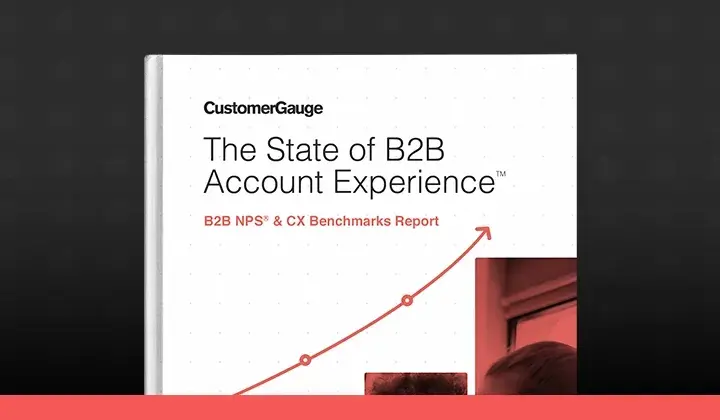So, you have decided the Net Promoter Score (NPS) program is the tool for you.
However, your business is moving into uncharted territory and you're afraid of what kind of headaches this may bring and how it may fail to deliver the results you expected — we get it.
We continue to witness the “sand traps” that companies fall into, even after running an NPS program for years.
That's why with 15+ years under our belt of helping companies get better results from customer feedback we’d like to share some actionable tips to help you prevent these pitfalls.
Let's get into it (or really, away from it).
6 NPS Rookie Mistakes to Avoid
#1. Very low response rates
Your problem: You're not getting enough feedback to give sensible answers (statistical significance!) This gives NPS naysayers an easy reason to shoot you down.
Low response rates should not be the case with Net Promoter.
NPS users typically aim for response rates of 25 – 50% of your customers. This is not unrealistic, even with the use of email (email is definitely not dead) If you follow the right steps, this is what you can expect.
Actively survey all your clients at least once a year, maybe more. Make it part of the way you do business. However, beware that you are not sending the same customer too many surveys. Once or twice a year is enough.
Although a low response rate can be seen as an NPS issue, it's more often than not a “Customer Relationship Manager problem”.
Ensure that your customer database is up to date with the correct email address. You’d be surprised how outdated customer data is at most companies.
Next, set yourself up for a high response rate by letting your customers know that you will survey them. In this invitation email, make it clear why you'd like to receive feedback and what’s in it for them.
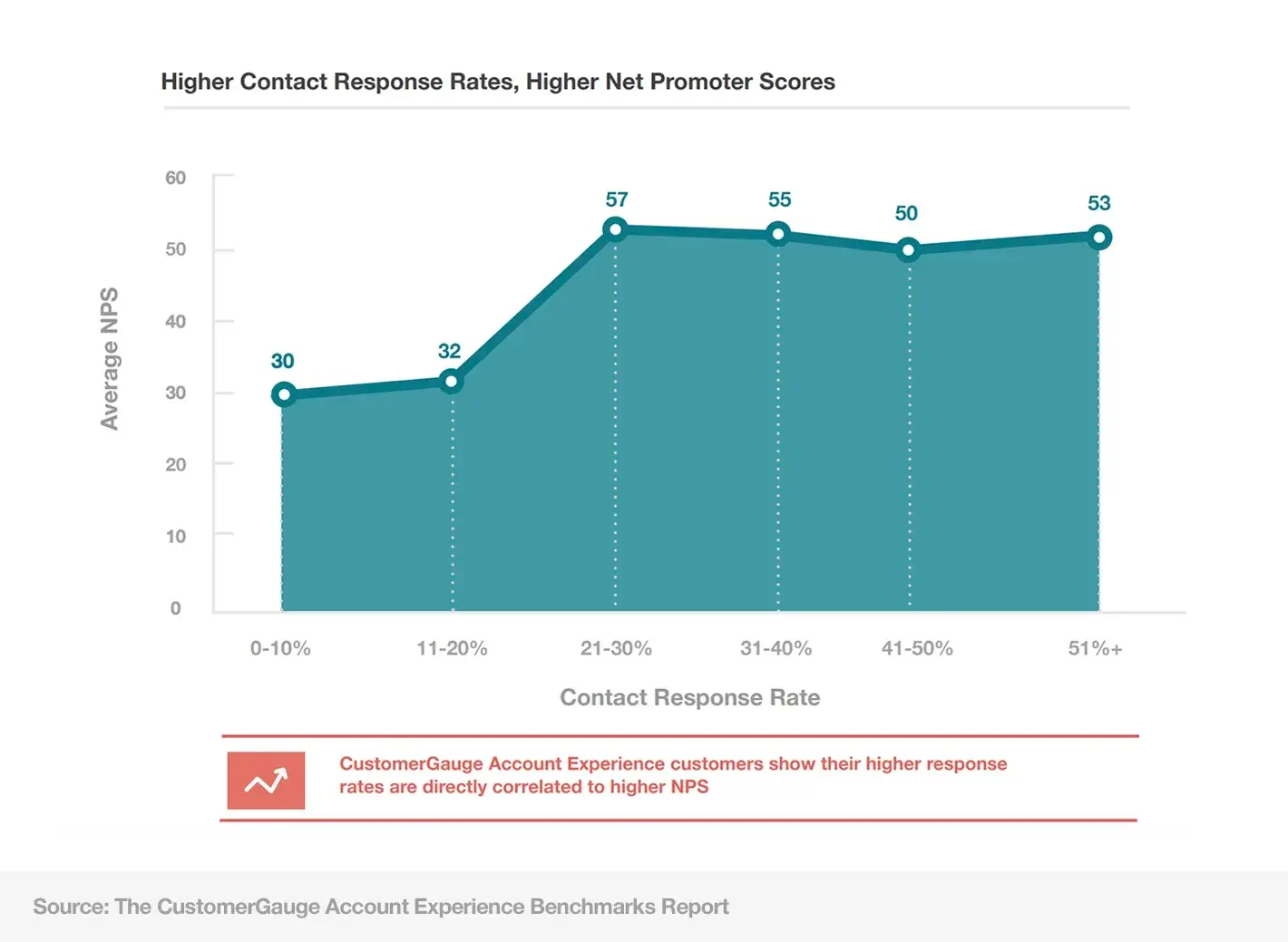
When you actually send the survey, you can also include an invitation video of your CEO explaining how much feedback is appreciated. Be creative here. Plus, if your survey is short (see rookie mistake #2), your customer will be happy to respond.
The solution: Not every one of your B2B customers is the same. Use the 80/20 rule to figure out which big clients you especially need to focus on — which 20% bring in 80% of revenue?
Don't forget to send out reminder emails.
Two reminders often work very well. Lastly, thank them for the help, share the results, and the actions you will take based on the feedback. This lets them know their feedback is valued and will improve response rates in the future.
*Note: Make your survey mobile compatible — 45% of your customers will fill out the survey on a mobile device.
👉 Discover our 5 Survey Distribution Methods to Increase Responses Rates here.
#2. Too many survey questions
Problem: "Wow! It's great to get customer feedback but I want to know much more. What does the customer think about X,Y,Z? How much can one extra question hurt, right?"
Well, every question you add to the survey makes it more complex to understand the answers.
Example: You ask customers to rate “Overall Service”, “Customer Service”, “After Sales Support” etc. on a scale of 0 to 10.
Customers not only struggle to answer these honestly but you are also left with the task of having to interpret them. How do you decide which one needs your priority, the “10” on Question 1 or the “2” on Question 3?
Each page you add to a survey makes responses drop off 10 – 20%, while many that start will not finish due to the length. This all ties back as well to Rookie Mistake #1.
Solution: Just use one question for rating. The Net Promoter scale "Would you recommend" is a very good proxy for everything else (Fred Reichheld writes about the science of this in his book "The Ultimate Question). Tell everyone else in the business you need nothing else, and get them to read the book!
Include a simple follow-up question, like “What is the reason for giving that score?” and provide a handful of possible reasons.
As such, categorize answers manually if you can (or use some simple techniques like CustomerGauge L1-L2 boxes to help tag issues “what you most liked/disliked”).
By taking this approach, you look past the averages and look for the highs and lows. This will help identify the key drivers to your customer’s (dis)satisfaction and prioritize your next improvements.
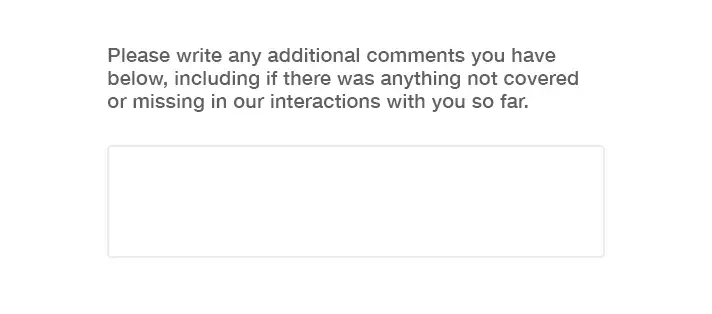
Spread these reasons around the business for the relevant people to read. Also, provide a single comment box so customers can answer freely. Read all the comments – don’t get a machine to analyze them.
Remember, most people respond on a mobile. So make it simple for them to answer, with thumb-friendly buttons and selections.
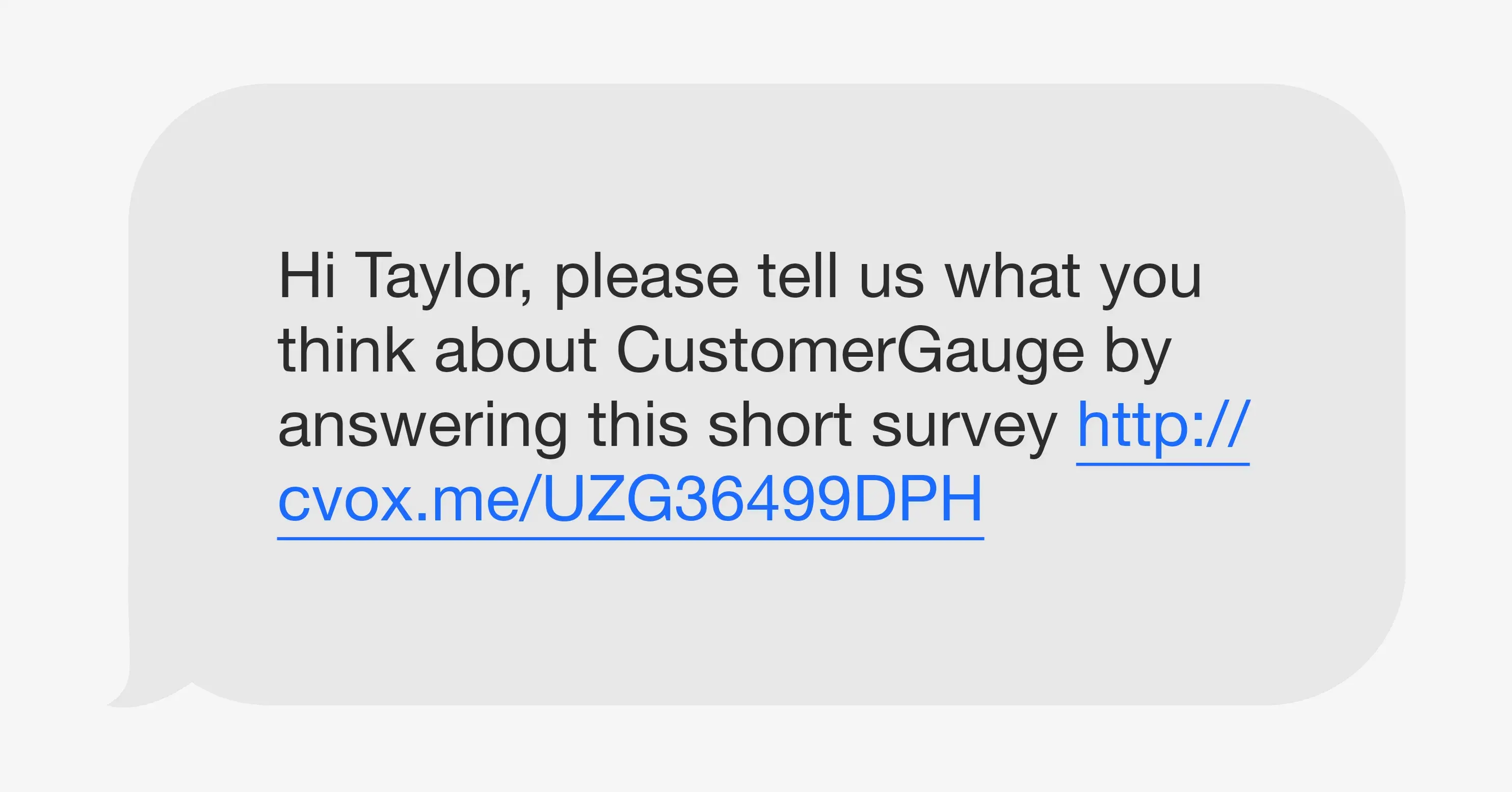
Don’t forget to add an opportunity to follow up: ask customers if they need more help. Get on the phone and ask follow-up questions, this way you can keep your surveys extremely short and leave the more probing questions for the phone. Don’t leave relationship issues to a survey.
#3. Making NPS just one person's responsibility
Problem: You put one person in charge of NPS. It's that person's project to address the issues and their metric to improve.
One person? If the program would be only about the logistics: making sure surveys go out, the response rate is adequate, closing the loop on all feedback, and organizing metrics — you could leave it up to that one person.
And we do recommend one person having the responsibility of doing all this (let’s call him/her the “Customer Success” or “Customer Retention” officer).
But NPS is a company project. Carrying out the survey and organizing metrics can be the job of one person, but using those findings for customer experience improvement has to be a company-wide focus.
Net Promoter only works if both managers and staff buy into it.
You need to direct issues to managers who are responsible for changing things. And they can best do it by giving comments to front-line workers and empowering them to fix customer issues.
Solution: The best way to get the whole company behind it is to engage more people in the project. Do this then by creating a few NPS champions on each team. Make a cross-functional team (a great opportunity to recognize junior team members) and meet regularly, ideally, every 3 weeks, to report what has been learned.
While getting the whole company involved is critical, a focus from top-level executives is paramount. At least once a month, look at NPS from the Chief Experience Officer (CXO) level. Your Customer Success officer will be the customer’s advocate in these meetings.
Since NPS really is about making continual improvements across the company, without top-level buy-in, not much will change. Have a look at “Kaizen”, or Six Sigma to get some inspiration on how to actually implement the changes.
Spreading the word also helps to engage people. Make sure you invest in a tool that can send out regular reports, and use digital displays to show customer comments and scores throughout the business.
Put some posters up. Consider it a good milestone for the project. And remember: your goal is to make the company customer-focused!
#4. Not following up
Problem: You have a mountain of customer feedback, you just analyzed it, and it's now a month old. You have real customer issues that need to be solved, what to do?
We find this quite often in first-time NPS campaigns: Companies have not done a survey in a while, so to compensate they survey all their customers in one go.
Expectantly, the response is too much for the salespeople or other account managers to follow up. By the time they get around to responding to the feedback, it’s too stale to deal with. Speed is of the essence here.
When time passes, it usually gets quietly forgotten by the salespeople and the company, but not by customers. Added to this is that in many cases, the company does exactly the same thing again in 12 months.
That’s the cause of some poor customer experience right there!
Solution: The first step is easy: don't send all the surveys at once. Stagger them throughout the year. With the right tools, you can send out continually, randomize the sending, or have it sent out after an interaction such as a purchase or call-center inquiry.
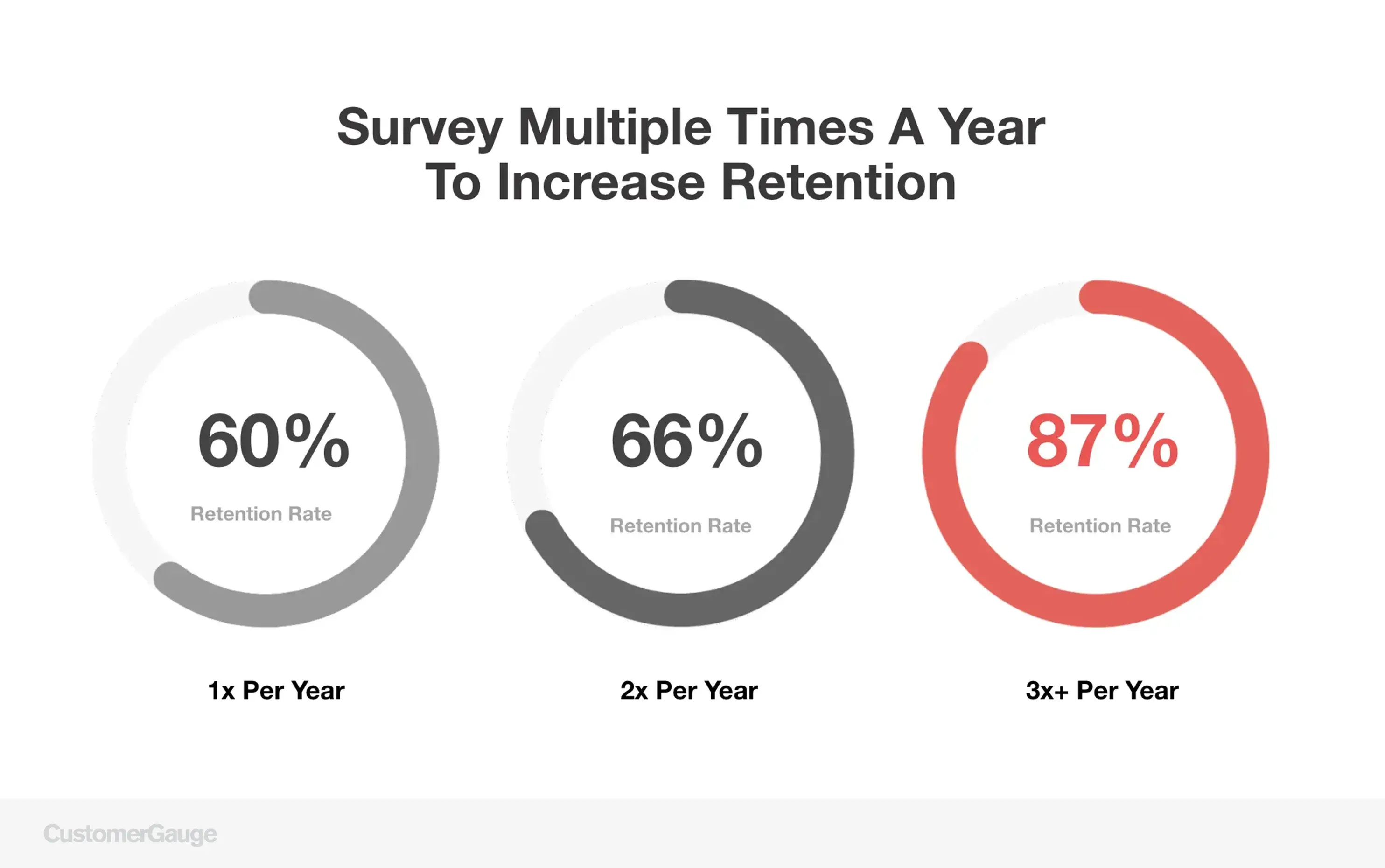
That way you can manage the input each week. How do you eat an elephant? One bite at a time.
Step number two (see Mistake #3): Make sure you have a team assigned to deal with responding to customers: do not create it as a job that will be addressed by a team “when they have the time.”
Also, imagine the implications on company strategy when VPs and Directors call customers back and hear about customers’ pain directly from the source.
In the third step, you measure the time it takes to respond to a customer issue (and close it). We call this closing the loop.
In this technological age, it is a must to take advantage of the wealth of data you possess about your customers and have your NPS program integrated into your CRM system — that will help salespeople or agents refer to feedback (positive or negative) in future calls.
#5. Forgetting what you learned last time
Problem: You can't find the results of last year's survey. It was on an Excel spreadsheet that you can't find, and which version was it anyway? So, now you can't tell what the respondents said, who answered, or what the score was.
Unless you have a robust system to measure continuously, it’s easy to lose track.
However, the best improvements are made by continually tracking metrics and feedback each month and quarter.
Tracking the score of the customer over time and checking if feedback holds you accountable to actually improve on what was suggested.
Solution: Invest in a system that keeps track of responses and can show you trends — your NPS score and time to solve. Make sure you understand what the drivers of pain are, do they change over time?
Use what you have learned to decide which part of the business has seen improved scores and how this can be turned into best practice.
We have clients that have 5 years of data, and they use this to understand the ROI impact of changes. Also, whatever you do, value your historical data.
If you change systems, make sure you can import data from one to another.
Last but not least: be consistent. Don’t change the structure of the survey too much, keep it simple, and again this is a great reason to use a very slim Net Promoter survey.
#6. Not remembering your manners
Problem: After diligently surveying customers, chasing them and reminding them, from the customer's point of view: crickets chirping in the night, nothing happens.
Customers await a response on what you learned but you have no plan or resources to do this.
99% of the time companies neglect customers after a survey.
Even when customers spend 20 minutes filling in a form, it’s very rare for a “thank you” to be sent. But if you value your customers’ time, think about this as $50 worth of consultancy given from them to you, for free.
So, a thank you is the least you can do!
Solution: After collecting responses (say once a month) sit with your experience team and agree on what the key points are that you learned from customers in this period. Take this information and summarize what you will do with it; even consider asking Artificial Intelligence (AI).
Once that is done, you can communicate back to the customers who responded (find a tool to do that in an easy way, like Account Experience (AX).
First, thank them for their input and explain how useful it is.
Especially thank your “top promoters” and see what you can do to get them to promote you or to continue to buy (and to buy more from you).
Think of incentives that actually would make them want to refer your company or product to other people. Nobody likes to feel pressured into doing something.
Secondly, give some detail about what you learned to actually show and share what changes you have made.
This shows you really value their feedback and are working hard to serve the customer better. Pick about three bullet points: usually something you have already implemented as a result of feedback, something you will do, and something to consider.
Finally, say that you are looking forward to hearing from them again.
Here is an example:
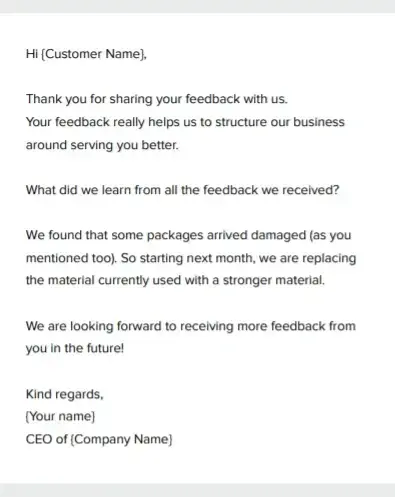
The result is that you’ll improve your response rate the next time you send out your survey (see mistake #1).
But more importantly, you make your customers feel that their time was valued and could potentially turn some of those detractors into promoters over time.
